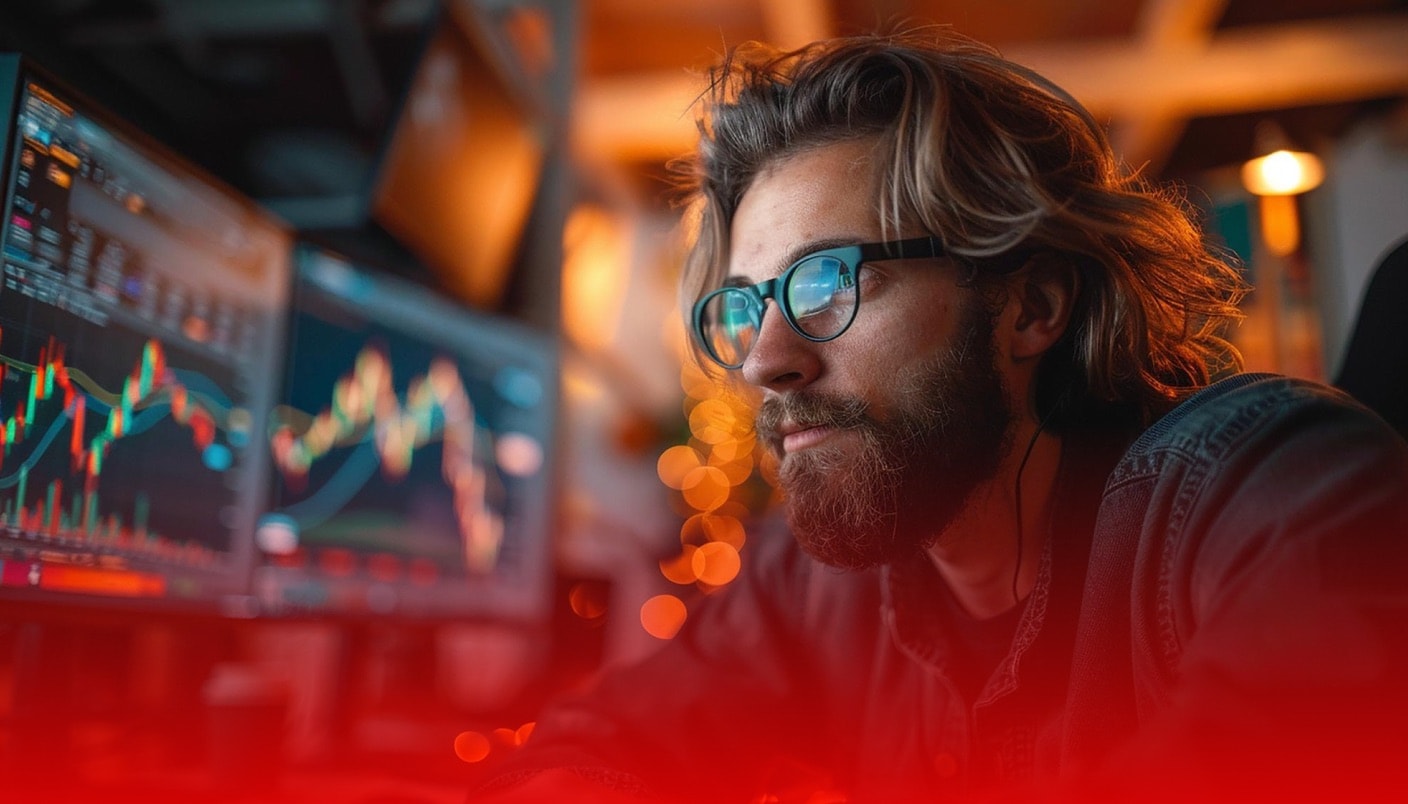Breaking News! 🚨 Top 10 brokers is here! See the most trusted trading platforms of 2024. Go now!
The Rise of Influencer Traders: Are They Shaping the Future of Social Trading?
Explore how influencer traders are affecting social trading. Find out how their advice and tips influence market trends and what it means for your trades.
1 year ago, Aug 06, 9:17 am

According to a report by Allied Market Research, the global social trading market size was valued at $2.2 billion in 2020 and is projected to reach $3.77 billion by 2028, growing at a CAGR of 7.8% from 2021 to 2028. This surge is largely attributed to the rise of influencer traders, with platforms like eToro or nomo reporting that 80% of their retail investors engaged in some form of social trading in 2023.
Moreover, a survey conducted by Trader’s Union in 2023 found that 62% of millennials and Gen Z traders considered social media influencers as their primary source of trading information, outpacing traditional financial news outlets. This shift in information consumption has profound implications for the trading community and the broader financial industry.
The Evolution of Social Trading
The concept of social trading can be traced back to the early 2000s, but it gained significant traction with the launch of platforms like eToro in 2007 and ZuluTrade in 2008. These early pioneers introduced the idea of copy trading, where users could automatically mimic the trades of successful investors. This democratized access to sophisticated trading strategies and opened up new possibilities for retail investors.
The initial focus was primarily on forex and commodities trading, with eToro reporting that by 2010, over 50% of their active users were engaged in some form of copy trading. This marked the beginning of a shift in how retail traders approached the markets, moving away from solitary decision-making to a more collaborative and community-driven approach.
Shift from Copy Trading to Content-Driven Engagement
As social media platforms gained prominence, the nature of social trading began to evolve. While copy trading remained popular, there was a noticeable shift towards content-driven engagement. Traders started to share their analysis, strategies, and market insights through blogs, forums, and social media posts. This transition was accelerated by the 2008 financial crisis, which led to increased skepticism towards traditional financial institutions and a desire for more transparent, peer-to-peer information sharing.
By 2015, platforms like TradingView had gained significant traction, boasting over 3 million active users who not only shared trade ideas but also engaged in discussions and collaborative analysis. This period saw the emergence of the first wave of trading influencers, individuals who built substantial followings based on their market commentary and educational content.
Integration with Social Media Platforms
The true revolution in social trading came with the seamless integration of trading discussions into mainstream social media platforms. Twitter’s #FinTwit community exploded in popularity, with a 215% increase in finance-related tweets between 2017 and 2020, according to a study by Sprout Social. The advent of easily shareable charts, real-time market updates, and bite-sized trading tips perfectly suited the fast-paced nature of platforms like Twitter and Instagram.
However, it was the rise of TikTok that truly catapulted influencer traders into the spotlight. The platform’s #FinTok hashtag garnered over 4 billion views by early 2024, with content ranging from basic financial literacy to complex trading strategies. This new medium allowed for creative, engaging, and easily digestible content that appealed to a younger demographic of potential traders.
The integration with social media platforms has fundamentally changed how trading knowledge is disseminated and consumed. It has created a more dynamic, interactive environment where ideas can be shared, debated, and implemented in real-time, setting the stage for the current era of influencer-driven social trading.
The Emergence of Influencer Traders
The modern influencer trader is a far cry from the stereotypical Wall Street broker. Often young, tech-savvy, and charismatic, these individuals have leveraged their trading knowledge and social media prowess to build substantial followings. The typical influencer trader is between 25-35 years old, with a background in finance, technology, or sometimes even fields unrelated to trading.
What sets them apart is their ability to translate complex financial concepts into accessible content. They often employ a mix of educational material, market analysis, and personal trading experiences to engage their audience. A survey by Influencer Marketing Hub found that 73% of successful finance influencers post content daily, with 60% focusing on a combination of educational and entertainment value.
Platforms They Dominate
While influencer traders maintain a presence across various social media platforms, certain channels have emerged as hotspots for trading content:
- TikTok (#FinTok): Short-form video content, often featuring quick tips and trend analysis
- Twitter (#FinTwit): Real-time market updates, charts, and heated debates
- YouTube: In-depth analysis videos and educational series
- Instagram: Visual content, lifestyle posts, and “day in the life” stories
- Discord/Telegram: Community building and real-time trading discussions
TikTok, in particular, has seen explosive growth in this area. The platform reported a 132% increase in finance-related content in 2023 compared to the previous year, with #FinTok videos accumulating over 8 billion views globally.
Case Studies of Prominent Influencer Traders
To illustrate the impact of these new-age traders, let’s examine two prominent figures in the space:
Sarah Thompson (@TechTraderSarah)
Starting as a software engineer, Sarah transitioned to full-time trading in 2019. She gained prominence on Twitter and TikTok by breaking down complex technical analysis into bite-sized, actionable insights. Her focus on technology stocks and options trading resonated with a young audience, growing her following from 10,000 to over 1 million across platforms in just two years. Sarah’s influence extends beyond social media; she’s been featured on CNBC and has collaborated with major brokerages to create educational content.
Alex Rodriguez (@CryptoKing_AR)
Alex’s journey began during the crypto boom of 2017. Unlike many influencers who focus solely on profits, Alex gained a reputation for his balanced approach, often discussing risk management and the importance of thorough research. His YouTube channel, which breaks down blockchain technology and cryptocurrency trading strategies, has amassed over 500,000 subscribers. Alex’s influence was evident during the 2022 crypto market downturn when his cautionary posts were credited with helping many followers avoid significant losses.
These case studies exemplify how influencer traders are not just sharing trade ideas but are shaping the way a new generation approaches the markets. They blend entertainment with education, personal branding with financial acumen, creating a new paradigm in the world of trading.
Impact on the Trading Community
The rise of influencer traders has fundamentally altered the dynamics of the trading community, creating both opportunities and challenges for participants across the spectrum of experience levels.
Democratization of trading knowledge has been one of the most significant impacts. Complex trading strategies and market insights, once the domain of institutional investors, are now freely shared and discussed in public forums. This accessibility has lowered the barrier to entry for many aspiring traders. A study by the Financial Conduct Authority found that 59% of younger investors (aged 18-40) credited social media influencers with increasing their understanding of financial markets.
However, this democratization is a double-edged sword. While it has empowered many with knowledge, it has also led to information overload. Traders, especially novices, often find themselves overwhelmed by the sheer volume of conflicting opinions and strategies shared online. This can lead to decision paralysis or, worse, impulsive trading based on the latest viral tip.
The increased accessibility for novice traders has led to a surge in retail participation in the markets. Brokerages reported a 31% increase in new account openings in 2023 compared to the previous year, with many citing influencer content as their primary motivation. This influx of new traders has increased market liquidity but has also raised concerns about market stability, particularly during high-volatility events.
Potential risks associated with influencer-led trading have become a focal point for regulators and industry veterans. The spread of misinformation, whether intentional or not, can have severe consequences in the fast-paced world of trading. There have been instances of pump-and-dump schemes disguised as legitimate trade recommendations, leading to significant losses for followers. In response, financial regulators in several countries have begun to scrutinize influencer content more closely, with some proposing guidelines for financial advice on social media.
The way traders consume financial information has undergone a dramatic shift. Traditional sources like financial news channels and analyst reports, while still relevant, are no longer the primary go-to for many traders. Instead, real-time updates from trusted influencers on platforms like Twitter and Discord have become the new norm. This shift has forced established financial institutions to adapt, with many now maintaining active social media presences and collaborating with influencers to reach younger audiences.
Community-based trading has emerged as a powerful trend, facilitated by influencer-led groups on platforms like Discord and Telegram. These communities provide a sense of belonging and support, especially for newer traders. However, they can also foster a herd mentality, where group think prevails over individual analysis.
The impact of influencer traders extends beyond just information sharing. They’re reshaping market dynamics, influencing asset prices through their recommendations, and even affecting how companies communicate with investors. Some corporations have begun tailoring their investor relations strategies to engage with influencer traders, recognizing their power to sway retail investor sentiment.
As the influence of these traders continues to grow, the trading community finds itself at a crossroads. The challenge lies in harnessing the positive aspects of this democratized, community-driven approach to trading while mitigating the risks associated with potentially unreliable or biased information.
Conclusion
The rise of influencer traders marks a significant shift in the landscape of social trading. These new-age market personalities have democratized access to trading knowledge, reshaped how financial information is consumed, and attracted a new generation of market participants. While their impact has largely been positive in terms of engagement and education, it has also introduced new challenges and risks to the trading ecosystem.
Get SCTA's daily newsletter in your inbox every weekday.
You may unsubscribe at any time.
